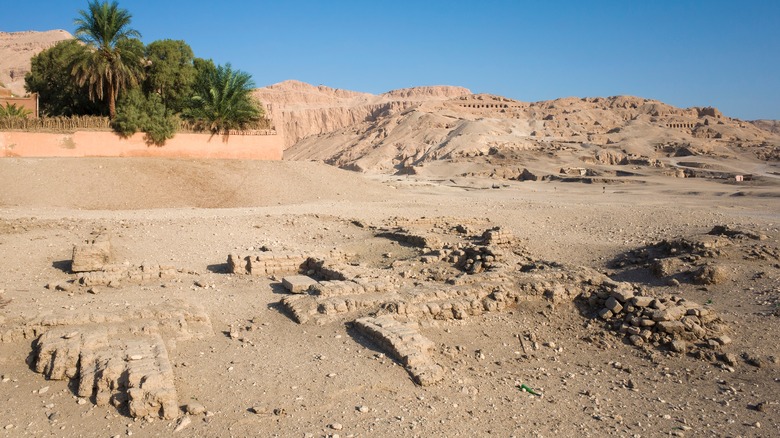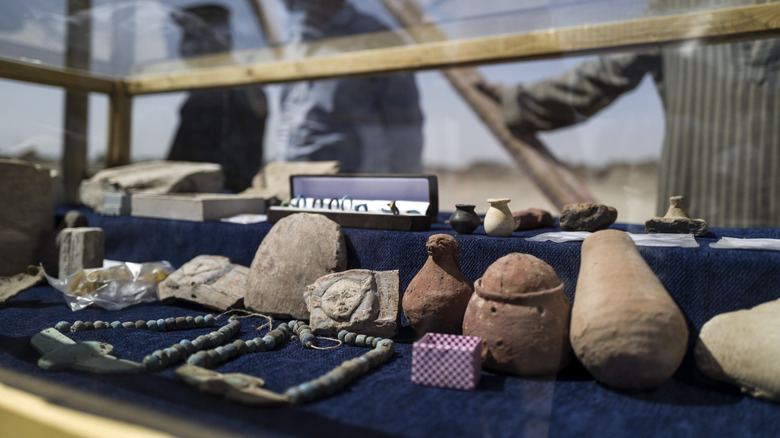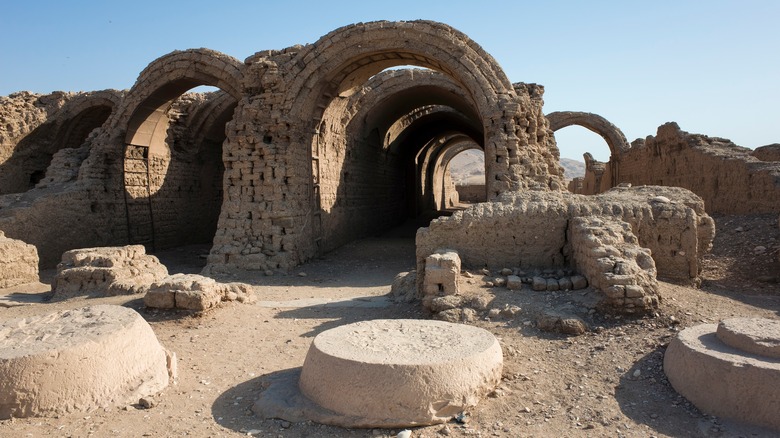The Centuries-Old Roman City Found Beneath The Surface Of Luxor, Egypt
Egypt is home to some of the oldest ruins on Earth, and in 2021, the oldest skeleton — thought to be some 52,000 years old — was discovered there (via Egypt Today). Luxor is a city rich with ruins. Many temples and artifacts in Luxor date back to the time of the ancient Egyptians. Ruins in this city include pavilions, halls, courts, obelisks, and a shrine to Alexander the Great, according to Britannica.
Modern-day Luxor was known as the southern half of the ancient city of Thebes in 2081 B.C. A significant discovery in the area over the past decades uncovered burial sites dating back some 4,000 years. Recently, archeologists found a complete sarcophagus made of pink granite along with small, carved statues, according to CBS News. In 2021, archaeologists discovered the 3,400-year-old "lost golden city of Luxor," which was once inhabited by King Tutankhamun for a short time (via National Geographic).
Discoveries include workshops and coins
A new discovery, however, shows that the ancient city of Luxor has more secrets to reveal. In January, 2023, archeologists excavated a complete Roman city near Luxor that dates back to the second and third centuries. Mostafa Waziri, head of Egypt's Supreme Council of Antiquities, said the city is the "oldest and most important city found on the eastern bank of Luxor," according to ART News. The residential section of the city could be part of the ancient city of Tiba, and that is important because this was a bustling area for hundreds of years. The discovery indicated that the Roman Empire had a strong presence in Luxor (via Ancient Origins).
Researchers unearthed residential buildings and metal workshops, showing that citizens had a way to manufacture metal. Other items include bells, pottery, tools and copper and bronze coins used by the Romans, reports Live Science.
It's the oldest residential area in the city
Another interesting find in the city was two pigeon towers. The structures, made from mud bricks, resembled the sides of cliffs, and they were used to attract pigeons, which would make homes and nests in them, reports Live Science. These towers looked like chimneys, and they were used to lure pigeons for a couple of reasons. First, their manure was collected for fertilizer. In addition, they were (and still are) an important part of Egyptian cuisine, according to Egyptian Streets.
Waziri explained that the discovery of this ancient Roman city is important because this area is the oldest residential city on the eastern mainland of Luxor, according to a translated statement by the Egyptian Ministry of Tourism and Antiquities. He also said experts will continue work in the area with the hopes of uncovering more discoveries that may give us additional information about how these ancient people lived (via Ancient Origins).


